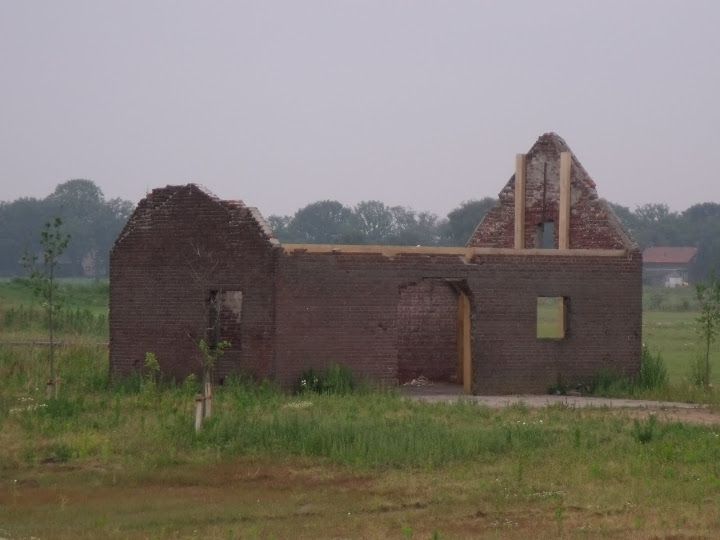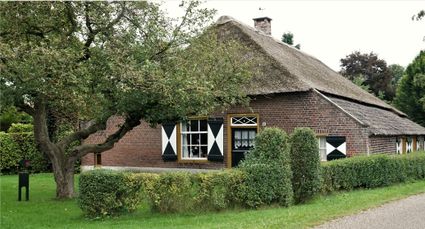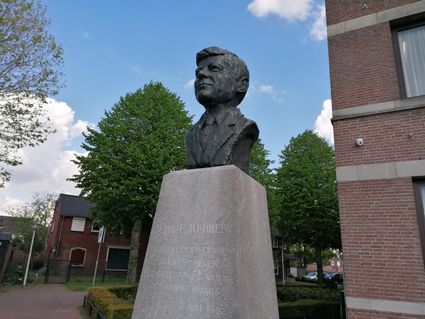Wehrmacht house Asten-Heusden
Neem contact op
Het Wehrmachthuisje at De Vier Eijckenbaan Golf Course
In the area between the 7th and 9th hole, you will find the remnants of a World War II Wehrmacht house. Maurice van Gelder talks to Con van Nieuwenhoven. He did a lot of sleuthing to uncover the facts. Allow us to take you back in time...
During World War II, the German army constructed the so-called Kammhuber Line to defend German cities against Allied bombing raids from the United Kingdom. Joseph Kammhuber, a German general, had been ordered to build an air defense line in July 1940.
The Germans had their Flak (anti-aircraft guns) to defend the airspace, but this was not sufficient.
General Kammhuber began establi…
Het Wehrmachthuisje at De Vier Eijckenbaan Golf Course
In the area between the 7th and 9th hole, you will find the remnants of a World War II Wehrmacht house. Maurice van Gelder talks to Con van Nieuwenhoven. He did a lot of sleuthing to uncover the facts. Allow us to take you back in time...
During World War II, the German army constructed the so-called Kammhuber Line to defend German cities against Allied bombing raids from the United Kingdom. Joseph Kammhuber, a German general, had been ordered to build an air defense line in July 1940.
The Germans had their Flak (anti-aircraft guns) to defend the airspace, but this was not sufficient.
General Kammhuber began establishing night fighter units. By the end of the year, the Luftwaffe had increased the number of night fighters to 165 aircraft. The night fighters were assisted by the beam of searchlights from the Wehrmacht houses.
This method could only be used at night in clear weather and was known as the Helle Nachtjagd. The Kammhuber Line was located on a strip of land that extended more than 200 km deep inland from the North Sea coast. Observation posts (Wehrmacht houses), radar installations, anti-aircraft batteries and airfields with day and night fighters were set up at fixed distances.
There was also an airfield near Venlo in those days. The planes took off from airport 'Fliegerhorst' in Venlo, and intercepted the English bombers with the help of searchlights.
Searchlights had been positioned at various locations throughout De Peel, including three in Someren on Slievenstraat, Steeg-Broekstraat and one along Kerkendijk. There was a searchlight in Heusden on Gezandebaan and one at the start of Ospelseweg, and a further one in Ommel north of the Goossens chicken slaughterhouse.
Nine searchlights were put in place in the municipality of Deurne, one in De Peel near the Nachtegaal and one in Leensel, and another in Sloot at Liessel and a further one on Ospeldijk.
In March 1941 the air battle over the south of the Netherlands began. The Germans established a searchlight zone ('Scheinwerferbatterie') to protect the German Ruhr area against attacks from Allied aircraft. The searchlights were interconnected by telephone and connected to the Gilze Rijen and Eindhoven airfield.
After the farmland was returned to its rightful owners, the Wehrmacht house on Gezandebaan was occupied by Tinuske Berkers and his growing family, due to the housing shortage at the time. Although many of these Wehrmacht houses have now disappeared, the dilapidated little building on Gezandebaan remained because of its history. This is how the tiny building ended up as part of the construction plans of the golf course. The little building is now being refurbished and will include a little museum.
The current owners of the golf course bought an old searchlight, among other things.
Fifteen soldiers were stationed there on average. The German soldiers would operate the equipment and searchlights to detect enemy aircraft and shoot them out of the sky. It is one of the few remaining Wehrmacht houses.
The tiny building has a glass roof and has been decorated with historical pieces from the war years












